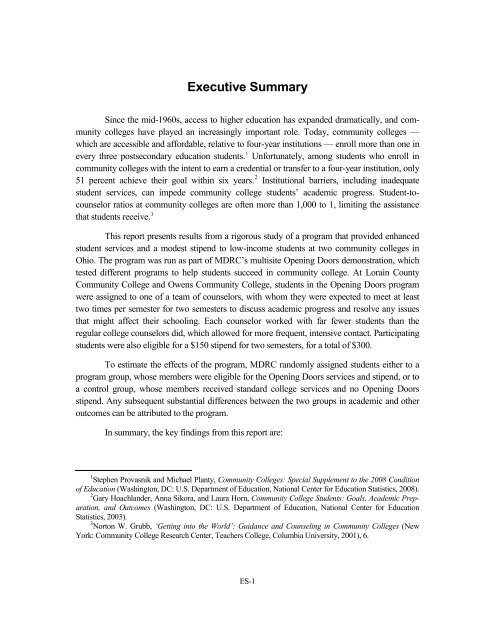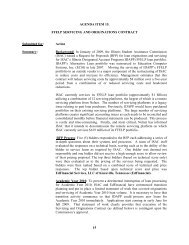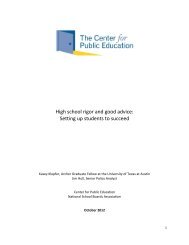MORE GUIDANCE, BETTER RESULTS?
MORE GUIDANCE, BETTER RESULTS?
MORE GUIDANCE, BETTER RESULTS?
Create successful ePaper yourself
Turn your PDF publications into a flip-book with our unique Google optimized e-Paper software.
Executive SummarySince the mid-1960s, access to higher education has expanded dramatically, and communitycolleges have played an increasingly important role. Today, community colleges —which are accessible and affordable, relative to four-year institutions — enroll more than one inevery three postsecondary education students. 1 Unfortunately, among students who enroll incommunity colleges with the intent to earn a credential or transfer to a four-year institution, only51 percent achieve their goal within six years. 2 Institutional barriers, including inadequatestudent services, can impede community college students’ academic progress. Student-tocounselorratios at community colleges are often more than 1,000 to 1, limiting the assistancethat students receive. 3This report presents results from a rigorous study of a program that provided enhancedstudent services and a modest stipend to low-income students at two community colleges inOhio. The program was run as part of MDRC’s multisite Opening Doors demonstration, whichtested different programs to help students succeed in community college. At Lorain CountyCommunity College and Owens Community College, students in the Opening Doors programwere assigned to one of a team of counselors, with whom they were expected to meet at leasttwo times per semester for two semesters to discuss academic progress and resolve any issuesthat might affect their schooling. Each counselor worked with far fewer students than theregular college counselors did, which allowed for more frequent, intensive contact. Participatingstudents were also eligible for a $150 stipend for two semesters, for a total of $300.To estimate the effects of the program, MDRC randomly assigned students either to aprogram group, whose members were eligible for the Opening Doors services and stipend, or toa control group, whose members received standard college services and no Opening Doorsstipend. Any subsequent substantial differences between the two groups in academic and otheroutcomes can be attributed to the program.In summary, the key findings from this report are:1 Stephen Provasnik and Michael Planty, Community Colleges: Special Supplement to the 2008 Conditionof Education (Washington, DC: U.S. Department of Education, National Center for Education Statistics, 2008).2 Gary Hoachlander, Anna Sikora, and Laura Horn, Community College Students: Goals, Academic Preparation,and Outcomes (Washington, DC: U.S. Department of Education, National Center for EducationStatistics, 2003).3 Norton W. Grubb, ‘Getting into the World’: Guidance and Counseling in Community Colleges (NewYork: Community College Research Center, Teachers College, Columbia University, 2001), 6.ES-1












